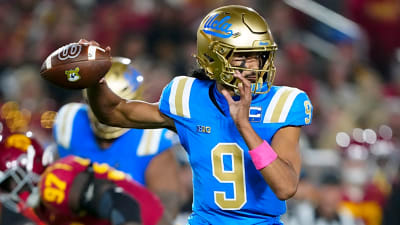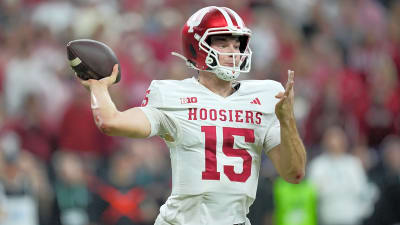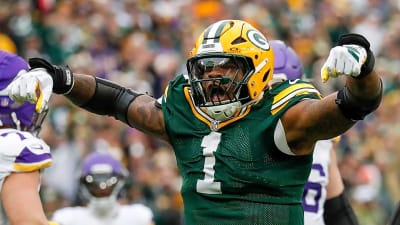
The Marlins announced a whopping 11 roster moves in advance of Saturday's game with the Phillies. Right-handers Max Meyer and Calvin Faucher were each placed on the 15-day injured list, with Meyer’s placement due to right shoulder bursitis retroactive to Sept. 4 and Faucher’s placement due to right shoulder impingement syndrome retroactive to Sept. 5. Derek Hill was also placed on the 10-day IL with a retroactive September 5 date, as the outfielder is dealing with a left shoulder impingement. Left-hander Andrew Nardi’s season is officially over after a move to the 60-day injured list, while left-hander Austin Kitchen was designed for assignment and right-hander Anthony Maldonado was optioned to Triple-A Jacksonville.
With the departures completed, here is the list of players joining Miami’s active roster. Righty Anthony Bender was reinstated from the 15-day IL, and right-handers George Soriano and Lake Bachar were called up from Triple-A. Also up from Jacksonville are left-hander Jonathan Bermudez and utilityman Javier Sanoja, whose contracts selected to the big league roster. Daniel Alvarez-Montes of El Extra Base reported (via X) earlier today that Sanoja was being promoted for his Major League debut, while Isaac Azout of Fish On First initially reported (links to X) that Meyer was headed to the IL and that Bermudez and Bachar were being promoted.
Meyer had been scheduled to start Sunday, but he’ll now hit the IL in the latest of a seemingly unending parade of injuries to Miami starters. While more will be known about Meyer’s situation later Saturday, it stands to reason that the Marlins could shut down the 25-year-old both due to this injury concern and the club’s overall plan to limit Meyer’s workload this season. Between 57 innings in the majors and 58 innings in the minors, Meyer had done a pretty good job of rebuilding his arm strength after missing all of 2023 due to a Tommy John surgery.
In terms of on-field results, Meyer has a 5.68 ERA over his 57 frames in the Show. His 50% grounder rate is very strong and his 7.7% walk rate is around league average, but he has allowed a ton of hard contact and struck out only 18.5% of opposing batters. Such struggles aren’t unexpected for a player in his first extended taste of MLB action, as Meyer’s only big league experience prior this season was a two-game cup of coffee in 2022 prior to his TJ procedure.
In addition to Meyer, it is worth speculating if Faucher or Hill might also be shut down for the remainder of 2024, given the late date on the calendar. The Marlins turned in this direction with Nardi, who only went to the 15-day IL a couple of weeks ago, and manager Skip Schumaker seemed optimistic at the time of the 15-day placement about the chances of Nardi returning before the end of September. Instead, Nardi’s season is done after posting a 5.07 ERA over 49 2/3 innings, though a set of impressive Statcast metrics and a 2.79 SIERA indicates that Nardi was among the more unlucky pitchers in the league.
Faucher has been one of the few bright spots for Miami this season, as the righty has overcome a .345 BABIP and a lot of walks to post a 3.19 ERA and 26.8% strikeout rate in 53 2/3 relief innings. The Marlins opted against trading Faucher amidst their many moves at the trade deadline and instead installed him at closer after Tanner Scott was dealt to the Padres.
Soriano’s one save makes him the only player on Miami’s active roster with any saves this season, so the Marlins could turn to a committee to handle the ninth inning for the rest of the season. Bender (in only his third MLB season) has the most experience of anyone in Miami’s bullpen and might be the favorite to close games now that he has recovered from the shoulder impingement that has sidelined him for the last four weeks. Bender has a 49.2% grounder rate and above-average strikeout and walk rates and is another Marlins pitcher whose real ERA (4.00) isn’t quite as reflective of how well he has pitched in 2024.
Bermudez returns to the big leagues after he was designated for assignment and then outrighted just within the last week. He’ll take over the 40-man roster spot left open by Kitchen, who is also heading to the DFA wire for the second time this season. The southpaw was designated by the Rockies in June and then quickly snapped up by Miami on a waiver claim.
Kitchen made his Major League debut on July 30 and thus far has only a 14.14 ERA to show for his seven innings and four games as a big leaguer. Six of his 11 earned runs allowed came just Friday in Miami’s 16-2 loss to the Phillies, as Kitchen had to make a short-notice start when Edward Cabrera was a late scratch due to migraine-like symptoms. Kitchen is a grounder specialist with good control, and while he has pitched pretty well in the minors, his lack of strikeouts could put a ceiling on his effectiveness against MLB hitters.
Hill has hit .238/.262/.427 over 151 plate appearances with the Marlins, Giants, and Rangers this season, with the 151 PA representing a new career high over Hill’s five seasons in the Show. Beginning the year on minors deal with Texas, he then went to the Giants for a brief stint after one waiver claim, and Miami again claimed him off waivers just over a month ago. The Marlins had plenty of holes to fill in the outfield after their trade deadline selloff, and Hill took advantage with some regular work in center field and a few appearances in left.
Sanoja was an international signing for the Marlins in July 2019 and over four minor league seasons has emerged as an extreme contact hitter, with only 136 strikeouts in 1783 PA in Miami’s farm system. A lack of power has limited what Sanoja has done with that contact, but between his speed and his knack for getting the bat on the ball, he has hit .291/.354/.431 over 492 Triple-A PA in 2024. Sanoja has stolen 83 bases in 126 attempts in the minors, so there is some extra baserunning potential there if Sanoja can become more efficient with his steals rate. Defensively, Sanoja is considered to fit best as a second baseman, but he is a decent enough fielder that he can play all over the diamond, so this versatility gives him more of a chance to stick in the Show.
The Marlins figure to use Sanoja at multiple positions during his time on the roster, though the team probably wishes he could pitch, given its larger needs on the mound. Some reinforcements might be coming before the season is over, as Ryan Weathers and Braxton Garrett have each started minor-league rehab assignments. Neither hurler has pitched since June, as Weathers has been dealing with a finger sprain and Garrett with a flexor strain in his left forearm.
More must-reads:
- With health concerns growing, Phillies take on Marlins
- MLB stadiums of yesteryear we wish were still around
- The '2003 Florida Marlins' quiz
Customize Your Newsletter
 +
+
Get the latest news and rumors, customized to your favorite sports and teams. Emailed daily. Always free!








